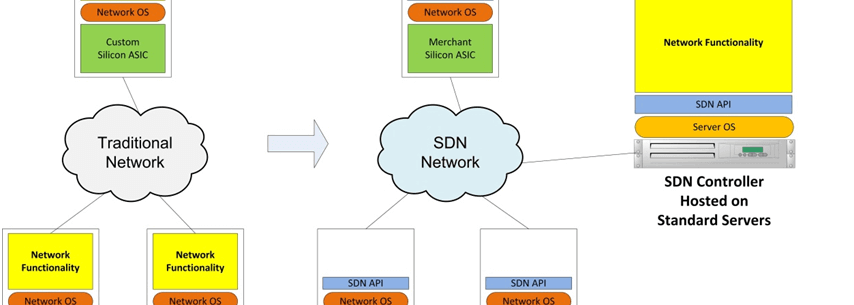
SDN vs Traditional Networking: Which Leads the Way?

Samira Kabbour
CMO
SDN (Software Defined Networking) has recently received widespread attention from customers, vendors and channel partners. As time goes by, SDN has become one of the most common ways for organizations to deploy applications. This technology helps organizations deploy applications faster and reduce overall deployment costs. Over the years, the technology has been announced as the next focus of the networking industry. Many people are trying to figure out what SDN is and how it will affect their work as a network engineer. It’s time to delve into this emerging technology. This article will help you understand SDN and make SDN vs traditional networking to see which leads the way.
What Is SDN?
Emerged in the early 2010s, SDN refers to a network architecture model that allows programmatic management, control, and optimization of network resources. SDN decouples network configuration and traffic engineering from the underlying hardware infrastructure to ensure complete and consistent control of the network using open APIs. Basically, this is a way to use open protocols such as OpenFlow, which can apply globally aware software control at the edge of the network to access network switches and routers that typically use closed and proprietary firmware. SDN is defined by the decoupling of control and packet forwarding planes in the network. It is an architecture that reduces operating costs and speeds up the time required to make changes or provide new services. SDN also enables the network to connect directly to applications via APIs to improve security and application performance. SDN creates a dynamic and flexible network architecture that can change as business needs change.
What Is Traditional Networking?
Unlike SDN, traditional networking has two main characteristics. First, traditional networking functions are mainly implemented in dedicated devices. In this case, “dedicated devices” refer to one or more switches (e.g. 10gb switch), routers, and application delivery controllers. Second, most of the functionality in traditional networking devices is implemented in dedicated hardware. ASIC (Application Specific Integrated Circuit) is commonly used for this purpose. However, this traditional hardware-centric networking is accompanied by many limitations. We will continue to discuss this issue later.
How Is SDN Different From Traditional Networking?
There are three most important differences between traditional networking and SDN.
- First, the SDN controller has a northbound interface that communicates with applications via application programming interfaces (APIs). This enables application developers to program the network directly. While traditional networking works through using protocols.
- Second, SDN is a software-based network, which allows users to control virtual-level resource allocation through the control plane and to determine network paths and proactively configure network services. While traditional networking relies on physical infrastructure (such as switches and routers) to establish connections and run properly.
- Third, SDN has more ability to communicate with devices throughout the network than traditional networking. SDN allows resources to be provisioned from a centralized location, and offer administrators the right to control traffic flow from a centralized user interface through more rigorous review. It virtualizes the entire network and gives users more control over their network capabilities. However, for traditional networking, the control plane is located in a switch or router, which is particularly inconvenient. The administrators cannot easily access it to dictate traffic flow.
Why Companies Are Shifting to SDN?
As data centers continue to change and traditional networking fails to adapt to the environment, vendors are turning to SDN. Here are some reasons.
·First, the proliferation of cloud services means that users need unfettered access to infrastructure, applications and IT resources. And this comes with requirement for more storage, computing, and bandwidth.
·Second, IT is becoming a consumer commodity where BYOD (bring-your-own-device) trend requires networks to be flexible and secure enough to protect data and assets as well as to meet compliance regulations and standards.
However, traditional networking cannot meet the increasing demands because it must adhere to product cycles and proprietary interfaces typical in vendor-specific environments. Network operators are often hindered when trying to customize the programming of the network. Adding and moving devices or bolstering capacity to traditional networking is complex and time-consuming. It requires manual access to individual devices and consoles. The reason SDN becomes an alternative is that it allows administrators to configure resources and bandwidth instantaneously and bring flexibility, efficiency, and resiliency to the data center. It also eliminates the need to invest in more physical infrastructure.
Conclusion
SDN vs Traditional Networking, it seems that the emerging technology SDN is going to revolutionize traditional networking. By adopting network automation, organizations will save a tremendous amount of time and significantly improve the flexibility of the network. If your network is equipped with traditional networking, how do you prepare for this inevitable transition?



